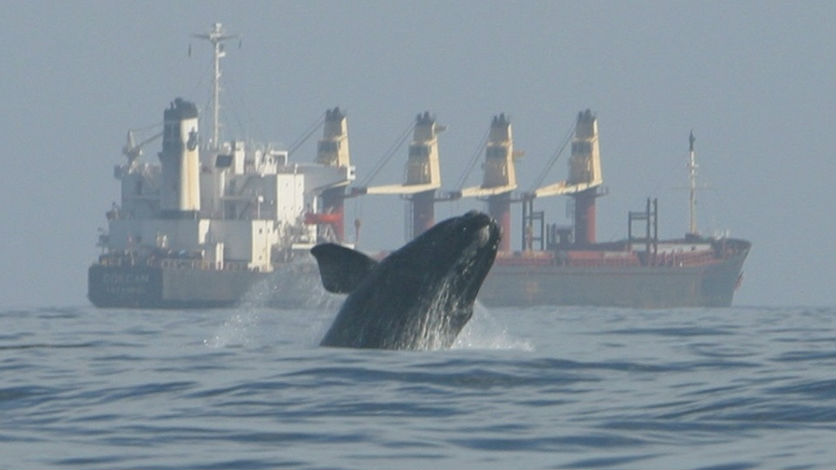Satellite Data Could Help Reduce Ocean Noise Risks

By MarEx 2016-07-24 04:31:49
The Canadian Space Agency is helping to fund six projects from Canadian companies that aim to use satellites data to address the noise risks that whales face from maritime traffic in Canadian waters.
Noise induces chronic stress in whales, and strong evidence of this effect occur in the days following the September 11 terrorism act when many ships remained in port and the ocean noise levels along the north American eastern seaboard dropped. The levels of stress hormones (cortisol) in right whale feces dropped by orders of magnitude at the same time.
Continuous noise can mask the sounds that whales use to communicate with one another and disrupt activities such as feeding and socializing. While studies have shown that right whales are working hard to change their vocalizations so they can communicate in the loud waters of the North Atlantic, the issue remains a problem for many animals.
One of the projects the Agency is funding is being undertaken by Jasco Applied Sciences. The company is proposing a space-based solution that would combine knowledge on noise sources like the number of vessels navigating in a given area and their proximity to marine habitat.
Jasco is aiming to predict the sound levels within known marine life habitat by integrating the AIS data with acoustic sound propagation simulations in conjunction with satellite imagery. Such a tool would provide knowledge and awareness on the extent of underwater noise emissions and explore the impact of maritime traffic rules that could impose a change on vessels speeds, routes and their passage times.
During this 10-month feasibility study, the company will demonstrate their concept by conducting a test case in the coastal waters of Nova Scotia, including: the Roseway Basin off southern Nova Scotia, which is home for endangered northern right whales; the Emerald Bank, a protected area for haddock; and the Gully Marine Protected Areas, safeguarding more than 2,300 square kilometers of marine habitat of the endangered northern Bottlenose whale.
If successful, the company hopes to equip marine traffic controllers with tools to forecast sound levels based on current vessel positions, courses and speeds. When alerted that sound levels exceed thresholds that could cause disturbances to marine life, they could request vessels to make course or speed corrections to mitigate the impacts.